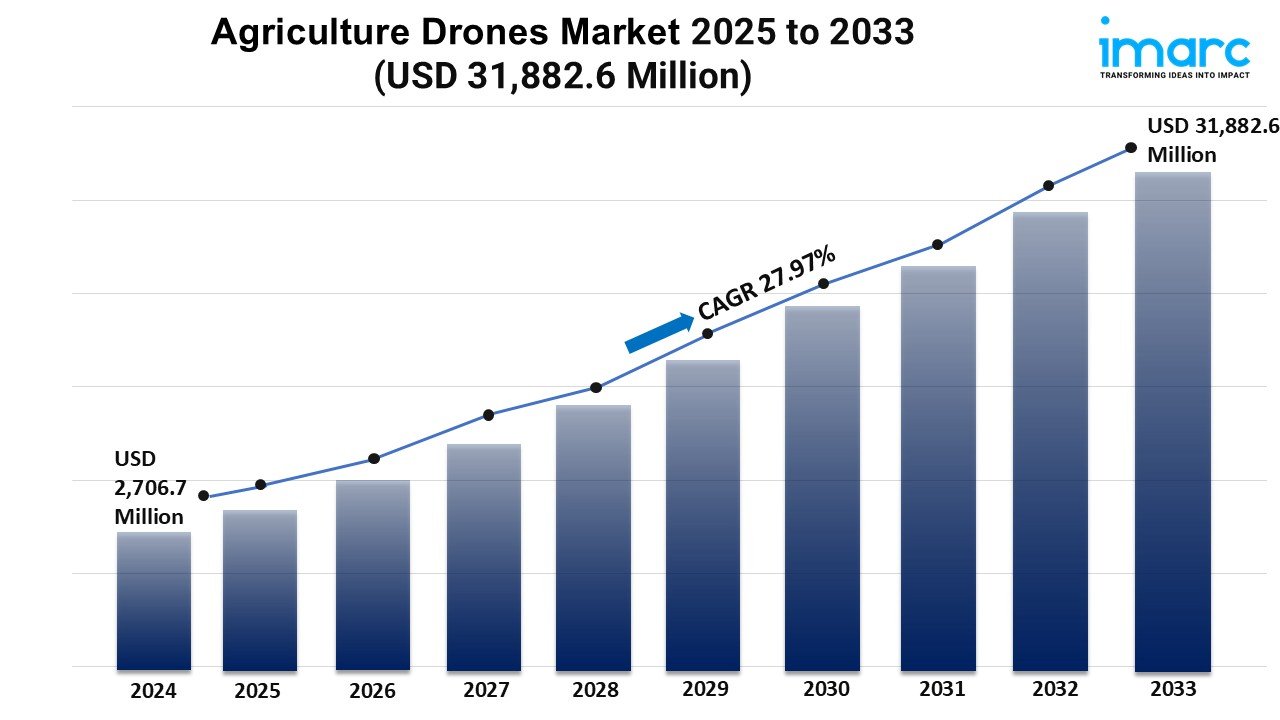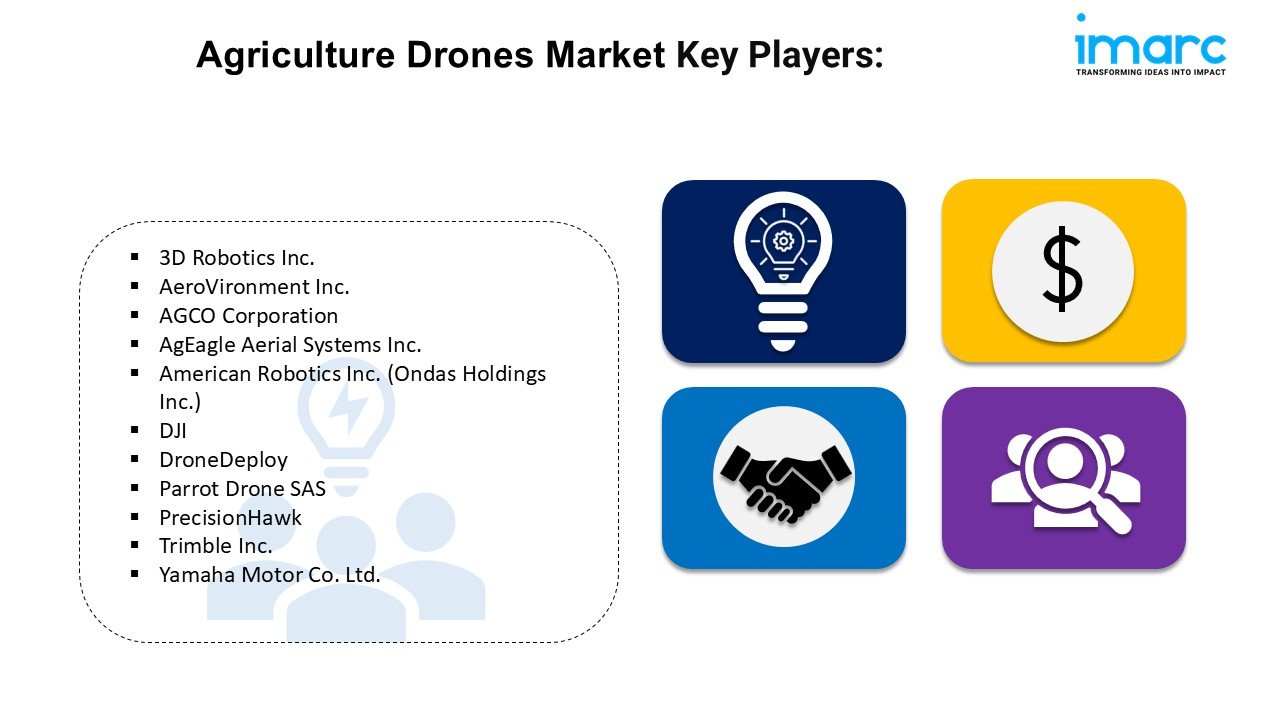
Market Overview:
The agriculture drones market is experiencing rapid growth, driven by rising adoption of precision farming, regulatory hurdles and technological advancements driving demand. According to IMARC Group's latest research publication, "Agriculture Drones Market Report by Offering (Hardware, Software), Component (Controller Systems, Propulsion Systems, Cameras, Batteries, Navigation Systems, and Others), Farming Environment (Indoor, Outdoor), Application (Field Mapping, Variable Rate Application, Crop Scouting, and Others), and Region 2025-2033", The global agriculture drones market size was valued at USD 2,706.74 Million in 2024. Looking forward, IMARC Group estimates the market to reach USD 31,882.58 Million by 2033, exhibiting a CAGR of 27.97% during 2025-2033.

This detailed analysis primarily encompasses industry size, business trends, market share, key growth factors, and regional forecasts. The report offers a comprehensive overview and integrates research findings, market assessments, and data from different sources. It also includes pivotal market dynamics like drivers and challenges, while also highlighting growth opportunities, financial insights, technological improvements, emerging trends, and innovations. Besides this, the report provides regional market evaluation, along with a competitive landscape analysis.
Grab a sample PDF of this report: https://www.imarcgroup.com/agriculture-drones-market/requestsample
Our report includes:
Factors Affecting the Growth of the Agriculture Drones Industry:
The agriculture drone market is experiencing significant growth due to the increasing adoption of precision farming techniques. Farmers are leveraging drones equipped with advanced sensors and imaging capabilities to monitor crop health, optimize irrigation, and apply fertilizers with pinpoint accuracy. This technology not only boosts yields but also reduces resource waste, making it a cost-effective solution for modern agriculture. As food demand rises alongside global population growth, the need for efficient farming practices is driving widespread drone adoption. Governments and agribusinesses are also offering subsidies and training programs, further accelerating market expansion.
While demand for agriculture drones surges, regulatory challenges remain a key dynamic shaping the market. Many countries impose strict airspace regulations, requiring operators to obtain licenses or adhere to flight restrictions. These rules, though necessary for safety, can slow down adoption rates, especially among small-scale farmers. However, industry players are collaborating with policymakers to streamline approvals and create drone-friendly frameworks. Innovations like automated flight planning and geofencing are also helping users comply with regulations, ensuring smoother integration into farming operations.
Cutting-edge advancements in drone technology are fueling market growth. Modern agriculture drones now feature AI-powered analytics, multispectral imaging, and longer battery life, enabling real-time decision-making and large-scale field monitoring. Startups and established companies are racing to develop affordable, user-friendly models tailored to farmers’ needs. As these technologies become more accessible, even developing regions are embracing drones to enhance productivity. The convergence of IoT and drone data is further revolutionizing farm management, creating a robust demand for smarter, more efficient agricultural solutions.
Leading Companies Operating in the Global Agriculture Drones Industry:
